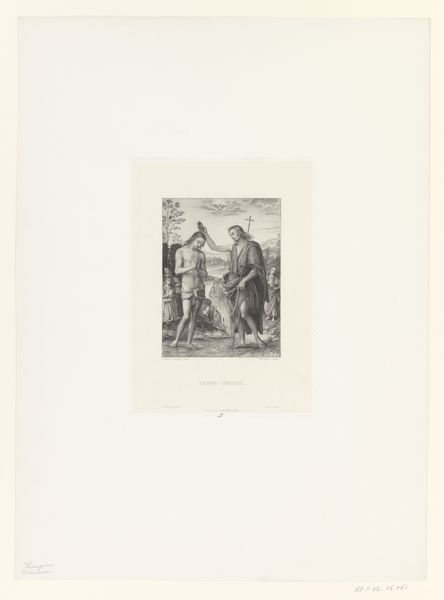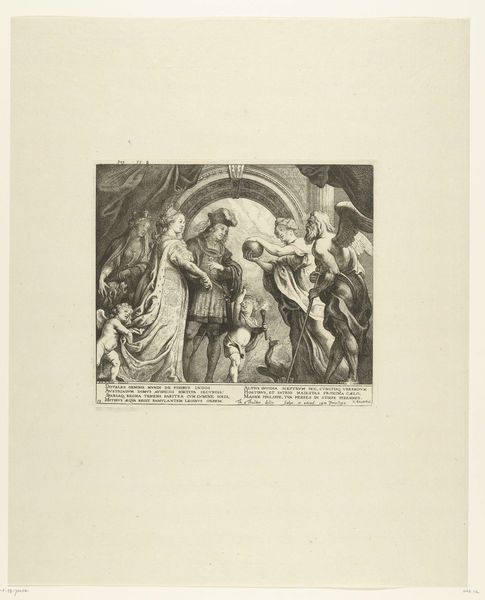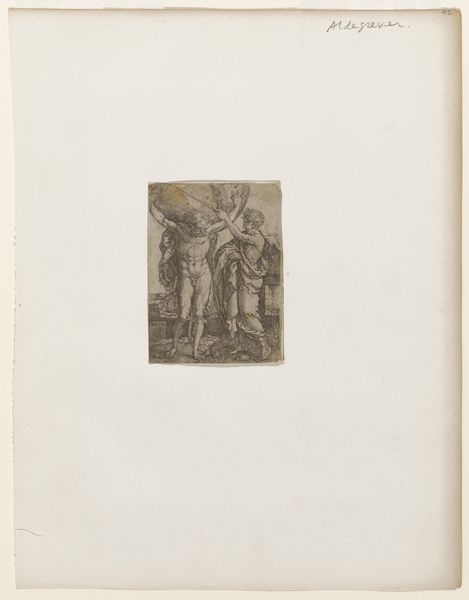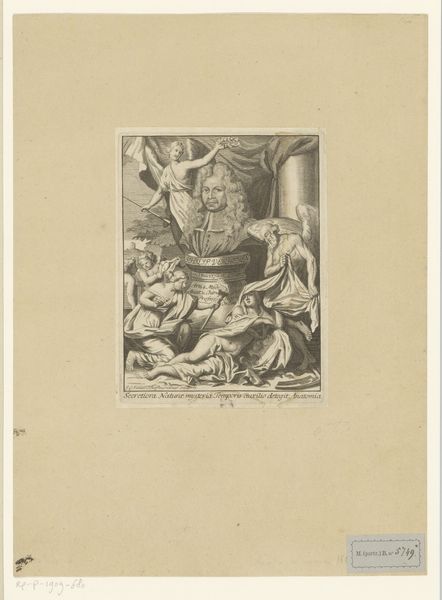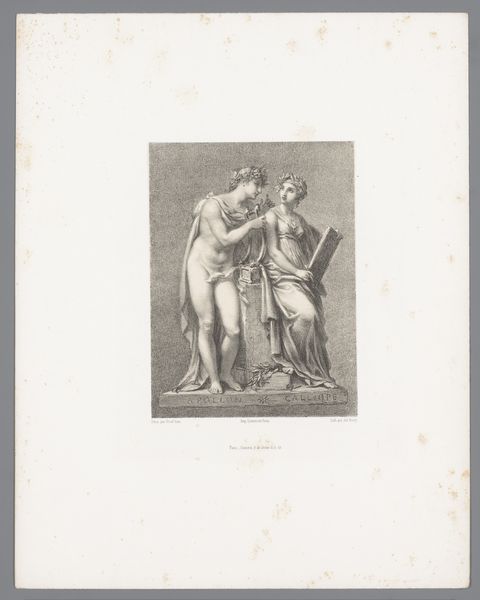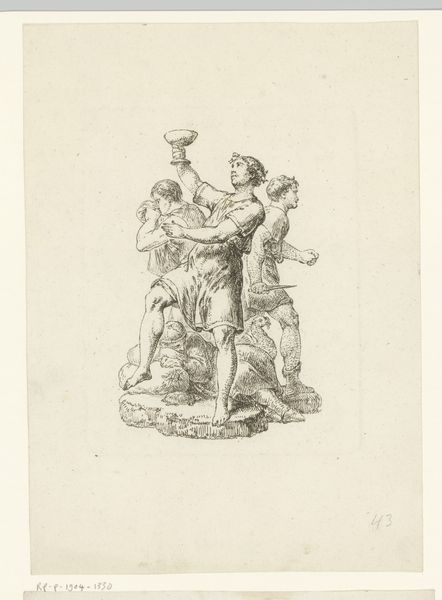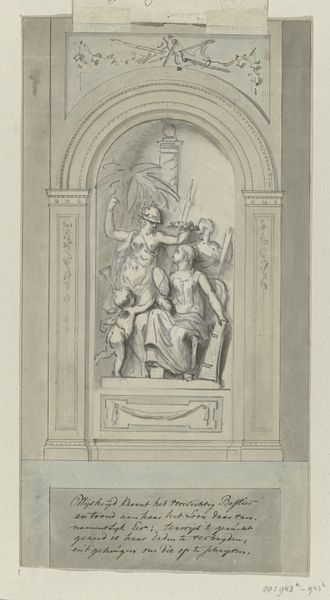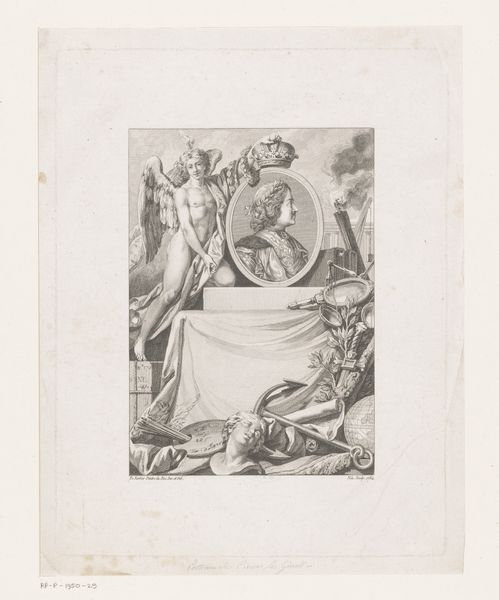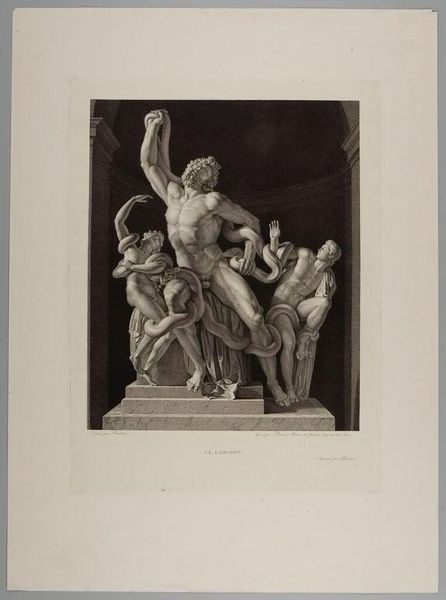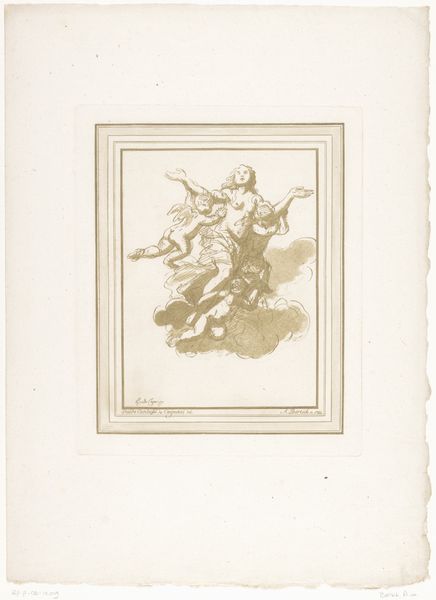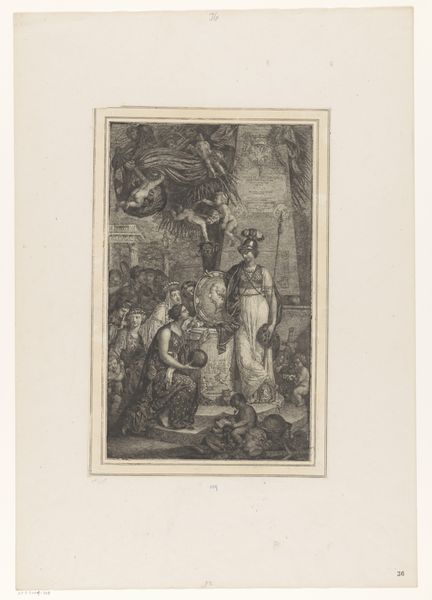
Dimensions: height 144 mm, width 120 mm
Copyright: Rijks Museum: Open Domain
This etching, "Bacchus en Ariadne," was created by Henri Keller using a technique that brings us close to the world of labor and reproduction. Etching involves coating a metal plate with a waxy, acid-resistant substance called a ground. The artist then draws through this ground, exposing the metal. When the plate is submerged in acid, the drawn lines are "etched" into the surface. This plate is then inked and used to create prints. Keller's choice of etching, a process enabling multiple reproductions, hints at the burgeoning print culture and the commodification of images. The fine, precise lines achieved through etching contrast with the subject matter: Bacchus, god of wine and ecstasy, and Ariadne, symbolizing passion. The labor-intensive process of etching is itself set in contrast to the themes of leisure, luxury, and the upper class depicted in the scene. By understanding the materials and processes involved, we appreciate how this etching captures a moment in time, reflecting the intersection of artistic skill, emerging print markets, and wider social structures.
Comments
No comments
Be the first to comment and join the conversation on the ultimate creative platform.
